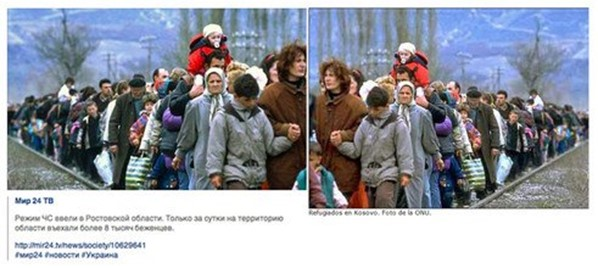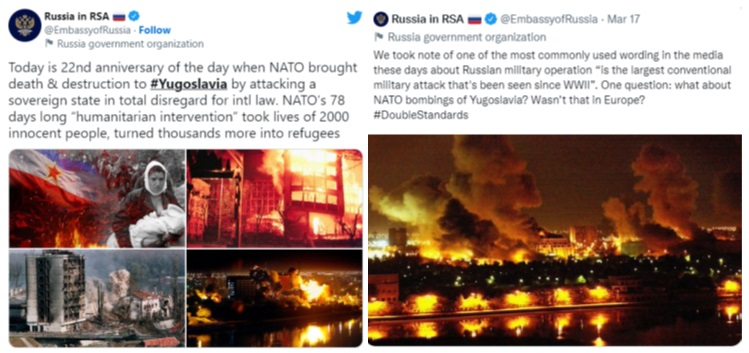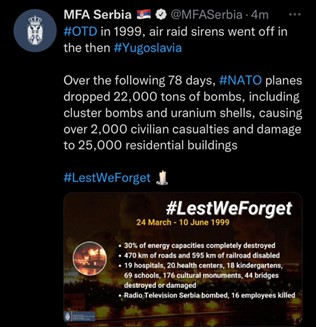Orwell, when elaborating on the effect and success of propaganda in the 1940s, says, among other things, that “something like this scares me because it gives me the feeling that the very concept of objective truth is dying out in this world”. 80 years later we live in the post-truth period, which means exactly what Orwell predicted would happen. In today's era, where a fact is attacked by an “alternative fact” (a term that in January 2017 was used by President Trump's adviser, Kellyanne Conway), where emotion often dominates rationality, where confusion or doubt is created about the truth through disinformation or misinformation, one must find a way not to be manipulated, not to be misled, to create beliefs or to act based on something that is not true.
In recent years, audiovisual forms of manipulation have become more frequent, also due to the fact that society now prefers to consume information through photography or video, rather than reading a text. Cheapfake is one of the audiovisual forms of disinformation or misinformation and this is being used by various global actors when they want to create confusion or fog on a certain issue. We have many such examples about the war in Kosovo, cheapfakes that aim to rewrite history by manipulating the truth. Such was the case with the photo of the Albanian refugee, Sherife Luta, on the border of Kosovo with North Macedonia.
Another example is the presentation of Albanian refugees as refugees leaving Ukraine for Russia. The Russian TV channel, “Mir 24” had published the following photo, changing the side and building a manipulated context of the photo. This was also deconstructed by StopFake, a fact-checker from Ukraine. This photograph is from 1999 and shows the deportation of Albanians and was taken in Bllacë.
 On the left side is the photo with interference and a fake caption. On the right side is the real picture.
On the left side is the photo with interference and a fake caption. On the right side is the real picture.
Source: StopFake
Russia and Serbia constantly try to spread the false narrative that NATO was wrong to intervene in Kosovo in 1999. In addition to manipulating the Russian or Serbian public, disinformation that supports this narrative is also spread in other countries, as was the case with the tweets (figure below) of the Russian Embassy in South Africa on the anniversary of the NATO bombing, and for two years in a row, this institution used manipulated photographs to further anti-NATO and anti-Kosovo propaganda.
 Manipulated photos published on Twitter by the Russian Embassy in South Africa. The 2021 tweet is on the left, while the 2022 tweet is on the right. Source: Twitter, @EmbassyofRussia
Manipulated photos published on Twitter by the Russian Embassy in South Africa. The 2021 tweet is on the left, while the 2022 tweet is on the right. Source: Twitter, @EmbassyofRussia
In March 2021, the Russian Embassy in South Africa used a manipulated photo of the Albanian refugee, where he was presented as a Serbian victim of the NATO intervention. In March 2022, the same Russian Embassy as well as the profile of Russia's mission to the OSCE used a photograph from the Iraq war while referring to the NATO bombing of Serbia. The same photo was also used by the Ministry of Foreign Affairs of Serbia, a few days later. However, the Serbian MFA deleted that tweet and later, another tweet was published without that picture. This photo manipulation from the Iraq war was also deconstructed by Reuters' fact-checking department.
 A tweet from the Ministry of Foreign Affairs of Serbia in March 2022, using a photo from the war in Iraq.
A tweet from the Ministry of Foreign Affairs of Serbia in March 2022, using a photo from the war in Iraq.
Source: Twitter, @MFASerbia
These false narratives have been around for over a decade, and disinformation campaigns to reinforce these narratives are activated time and time again. Another case was the disinformation published by Sputnik about the denial of the Recak massacre. The Minister of Foreign Affairs of Russia, Lavrov, had compared the incident of Bucha in Ukraine with Recak in Kosovo, stating that they are fictional. Regarding the massacre of Recak, the Russian chief diplomat in an interview for Russian Sputnik said that the bodies of the massacred were not civilians, but according to him, they had changed their clothes to look like civilians.
Disinformation narratives will continue to provide challenges, but there is hope for refuting these stories and advancing the truth. It is imperative that people develop media literacy, critical thinking abilities, and a dedication to double-checking information before accepting it, in order to create a society that is more resilient and knowledgeable. Among other things, the model of three basic questions could be very useful for each individual and together, we contribute to a narrative where the light of truth outshines the shadows of disinformation and propaganda.
Stay Resilient! Click this link to check out our free, self-paced course on Countering Disinformation.
Background illustration by: sezerozger